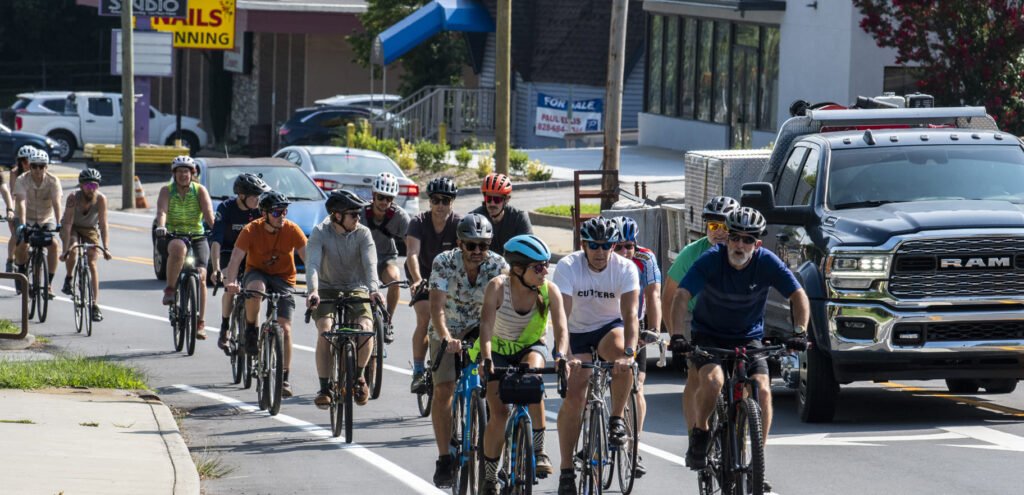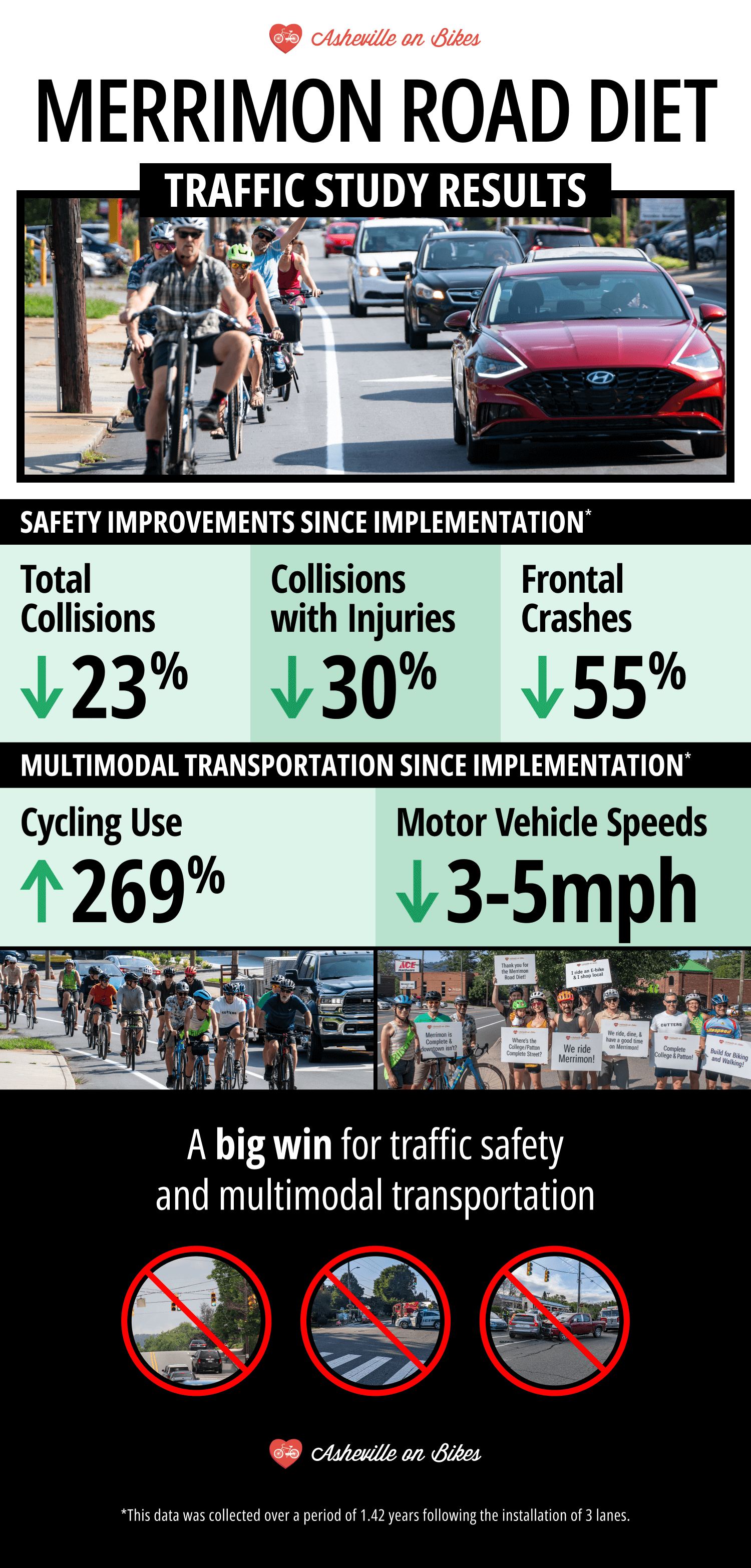
The Merrimon Road Diet initial traffic study is complete and the results are a big win for traffic safety and increases in multimodal use of the corridor. The study looked at safety, mobility, and volume metrics before and after the lane conversion. The measurements taken after the installation of the 3 lanes are from a 1.42 year time period. The findings include:
- A decrease in total collisions (down 23%)
- A decrease in collisions with injuries (down 30%)
- A decrease in motor vehicle speeds (down 3-5 mph)
- A shift in remaining crashes from frontal crashes to rear end crashes (frontal crashes down 55%)
- An increase in cycling use on the corridor (up 269%)
- A minimal increase in travel times for cars (up 2-14 seconds)
Taken together, this initial result indicates that Merrimon has been made dramatically safer with minimal impacts on car trips. When the project was proposed, a majority of public opinion supported the project, as did Asheville on Bikes. Opponents predicted many minutes of delay, injuries to cyclists from cars, and, generally speaking, doubted that the project would offer significant benefits to the area. Those claims are debunked by this data.
The new 3 lane traffic pattern with bike lanes is safer for all road users and is a dramatic improvement from the old 4 lane configuration.
We know that some will still grumble about the increase in travel times, which are largest during the peak travel times in the afternoon, roughly 4:30 PM to 5:30 PM. In that afternoon peak, travel times increased by 2-14 seconds when measuring the full length of the Merrimon corridor from I-240 headed north.

These findings mirror what we found when advocating for the project: a small increase in travel time is worth it on streets where we can trade a little travel time for dramatic improvements in safety and increases in active transportation, like walking and biking.
These findings have implications for many other streets in the region. We have many other 4 lane roads similar to Merrimon where frequent curb cuts, commuter traffic, commercial businesses, a lack of similar alternate routes, and neighborhood traffic all interact. If a 3 lane conversion works on Merrimon Ave–a major road with significant daily traffic volumes (12,400 – 21,300 ADT volumes)–it can work on other roads in Western NC.
A scheduled road resurfacing project presents a prime opportunity to advance our City’s commitment to complete streets. AoB appreciates everyone who supported safer conditions on Merrimon. Thank you for your participation.
You can watch an NCDOT presentation of the findings, delivered during the June meeting of the Multimodal Transportation Commission.
